Let's talk Pekingeses
Bow down to the Pekingese. This toy-sized canine, once the favoured companion of Chinese royalty, struts around in a dignified manner with a regal air. Once you’ve earned the trust of a Pekingese, and shown respect for their independent temperament, an affectionate and loyal dog awaits you. Wary of strangers, they make excellent watchdogs by putting their bark to good use. The Pekingese likes to avoid boisterous activity, so tends to bond best with teenagers and adults. With a Pekingese, you always get back what you give.
Official name: Pekingese
Other names: Lion Dog
Origins: China
Drooling tendencies
1 out of 5Shedding Level
4 out of 5Energy level*
1 out of 5Compatibility with other pets
2 out of 5Warm weather?
1 out of 5Suited to apartment living
5 out of 5Family pet?*
2 out of 5Can stay alone
3 out of 5
| Male | Female |
|---|---|
| Height | Height |
| 15 - 23 cm | 15 - 23 cm |
| Weight | Weight |
| - 5 kg | - 5.4 kg |
| Life stages | |
|---|---|
| Adult | |
| 10 months to 8 years | |
| Mature | Senior |
| 8 to 12 years | 12 years upwards |
| Baby | |
| Birth to 2 months | |
Drooling tendencies
1 out of 5Shedding Level
4 out of 5Energy level*
1 out of 5Compatibility with other pets
2 out of 5Warm weather?
1 out of 5Suited to apartment living
5 out of 5Family pet?*
2 out of 5Can stay alone
3 out of 5
| Male | Female |
|---|---|
| Height | Height |
| 15 - 23 cm | 15 - 23 cm |
| Weight | Weight |
| - 5 kg | - 5.4 kg |
| Life stages | |
|---|---|
| Adult | |
| 10 months to 8 years | |
| Mature | Senior |
| 8 to 12 years | 12 years upwards |
| Baby | |
| Birth to 2 months | |
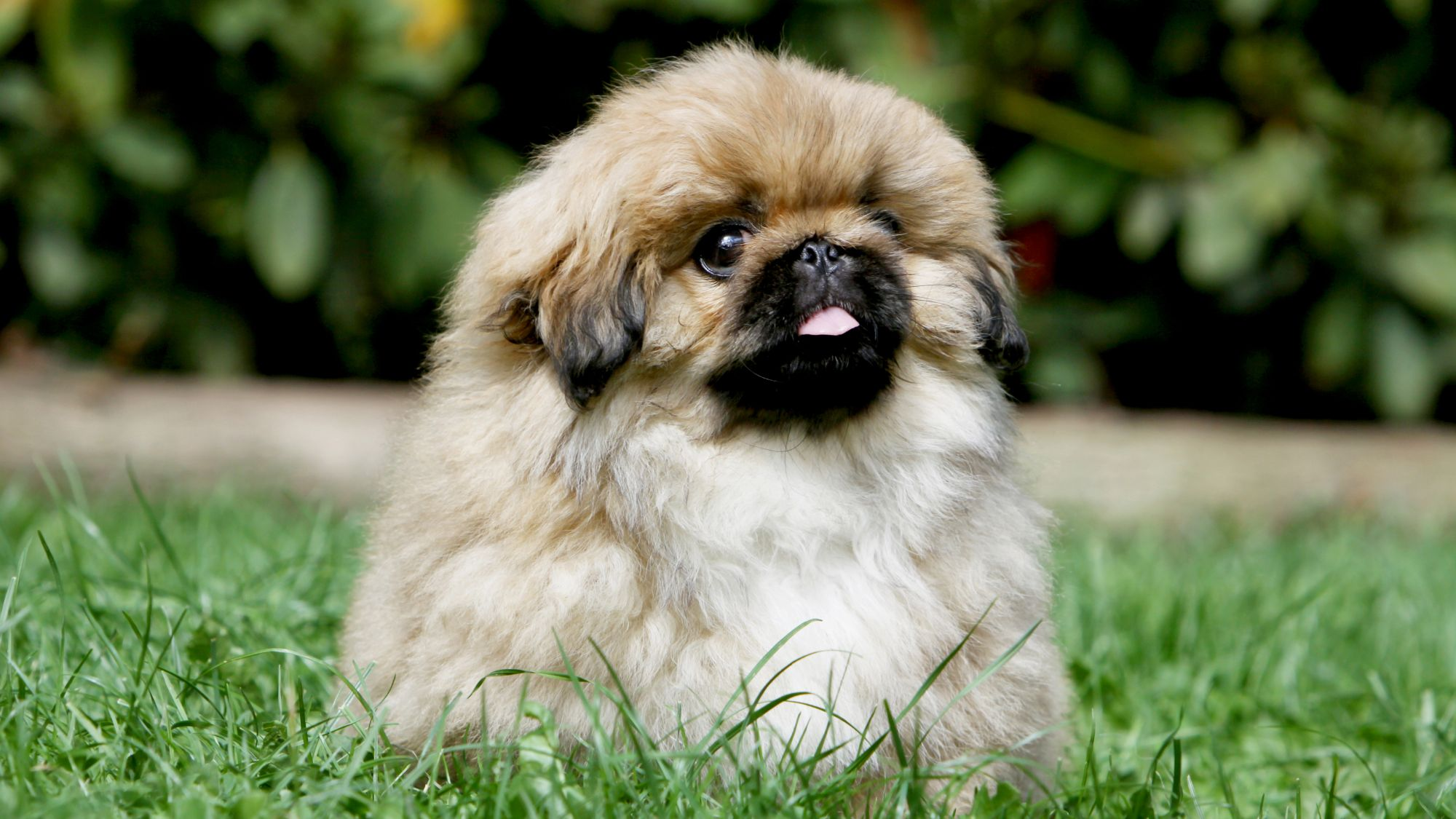
Get to know the Pekingese
All you need to know about the breed
I am Pekingese, hear me roar. The lionlike appearance of the pocket-sized Pekingese is a good indication of their true personality: confident, stubborn and direct. They will never be the one to start a fight, but if it means protecting their owners, the Pekingese is not likely to walk away. This devotion makes them excellent watchdogs, signalling the presence of strangers with a bark.
The Pekingese has a playful side but they don’t require much exercise. As house dogs, the Pekingese is well-suited to apartments, where they enjoy running around but nothing too taxing. Air-conditioning is a plus as the breed is particularly heat sensitive, due to their short noses and dense coat. The Pekingese will enjoy walking on a harness around the neighbourhood, especially if you live in a quiet area, which will also help with their social development.
Some Pekingese dogs may develop Brachycephalic airway syndrome, also known as respiratory distress syndrome, due to their flat-faced features. This is why they condition presents itself through snuffling or snorting. However, if your Pekingese takes to fainting and/or refuses to put their paws outside, consult your vet. Treatments vary from weight control to steroids and even surgical options, depending on the Pekingese.
They love playing with other Pekingese dogs, but don’t tend to gel with other household pets without some training. The same goes for curious toddlers who may poke and prod them, causing harm without meaning to.
Once the Pekingese has your trust they will reveal their big heart and goofy side. So if you’re looking for an affectionate and loving canine companion who doesn’t require strenuous daily exercise, then the Pekingese may well be the breed for you.
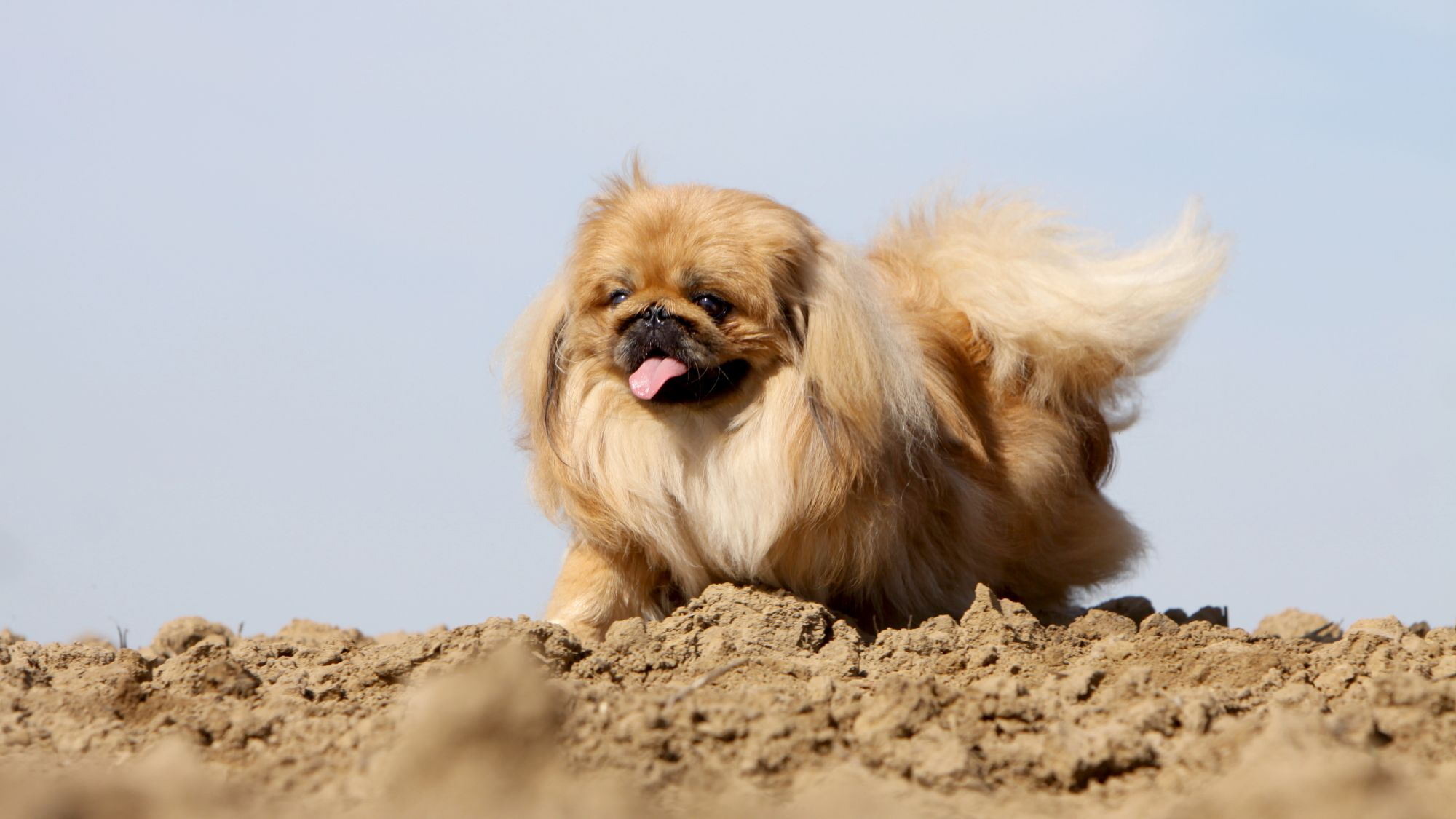
2 facts about Pekingeses
1. The King & I
Named after the city of Peking, this breed was the preferred canine companion to Chinese royalty and nobility. Ordinary folk were required to bow to the Pekingese, behaviour that the breed is still comfortable with to this day. The Pekingese was such a precious commodity that punishment for attempting to steal one was the death penalty.
2. Small dog syndrome
Setting boundaries is necessary when living with a Pekingese. If they think that they rule the roost, this will bring out their less than desirable temperament. Approach training firmly but gently, using positivity and praise to show your Pekingese that you respect them while setting boundaries. In return, they will be a serene, loyal and obedient companion who will sometimes reveal their silly joker side.
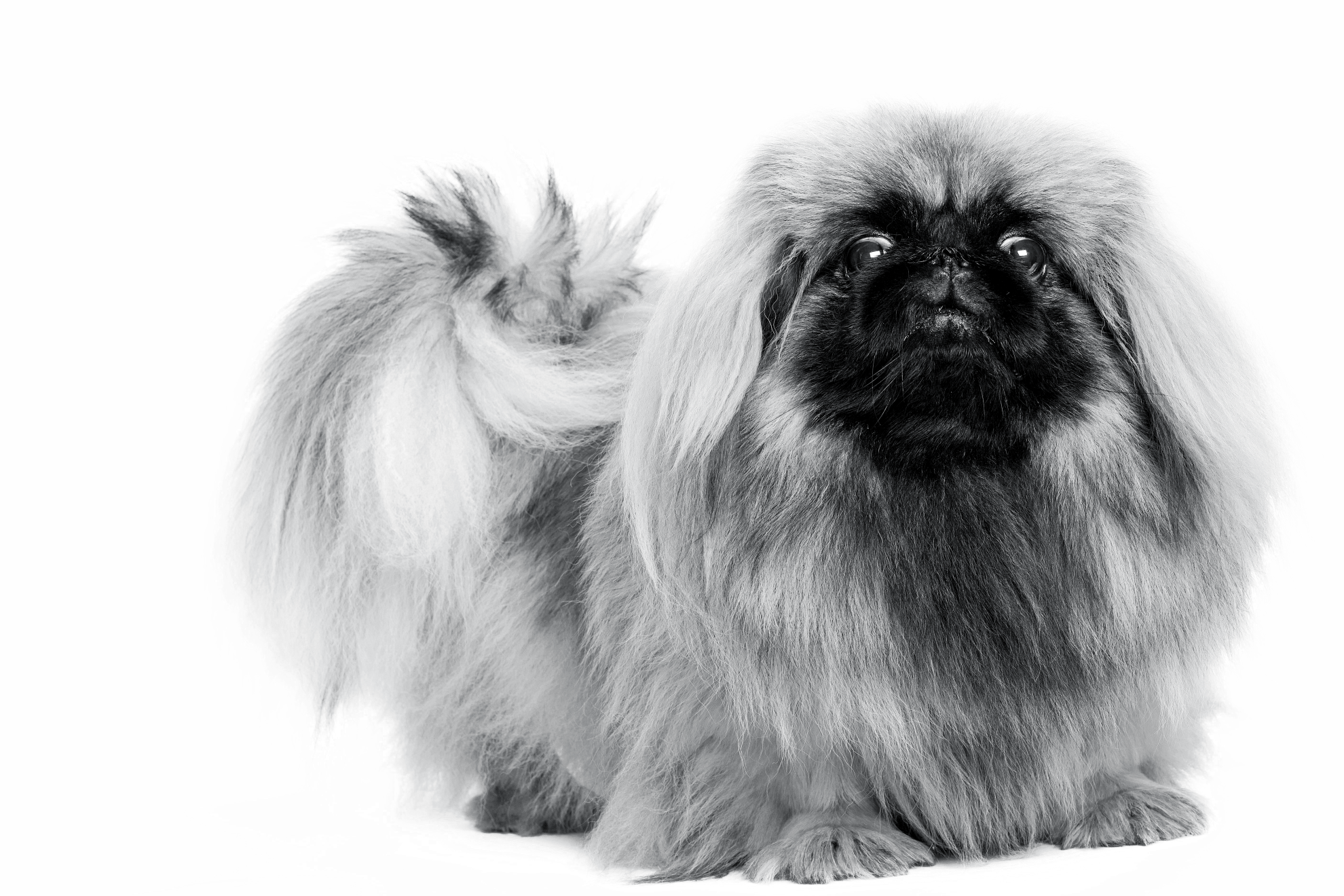
History of the breed
DNA shows that the Pekingese is one of the oldest dog breeds out there, in existence for at least 2,000 years in China. Legend claims that the Pekingese was originally a lion, shrunk down to dog size by Buddha. While lovely to think of it happening this way, it is much more likely that the Pekingese was intentionally downsized, through breeding, by Chinese royalty.
The breed was a precious secret to the rest of the world, kept carefully within the mansions of Chinese emperors, before their discovery by Westerners in 1860 during the Opium War. Five Pekingese dogs were brought over to England and remained in favour with those in power. Queen Victoria is alleged to have been the owner of a Pekingese called Looty.
The breed quickly gained popularity, despite or perhaps because of their rareness, both within England and across the pond in America. The first Pekingese to appear at a British dog show was Pekin Peter in 1894. Next up was Rascal, the first Pekingese to be registered with the American Kennel Club in 1906.
Today, they remain both rare as a breed and popular at dog shows, with a Pekingese being crowned winner of the 2019 Best in Show, at the 2019 AKC National Championship.
From head to tail
Physical characteristics of Pekingeses
1.Ears
2.Face
3.Body
4.Coat
5.Tail
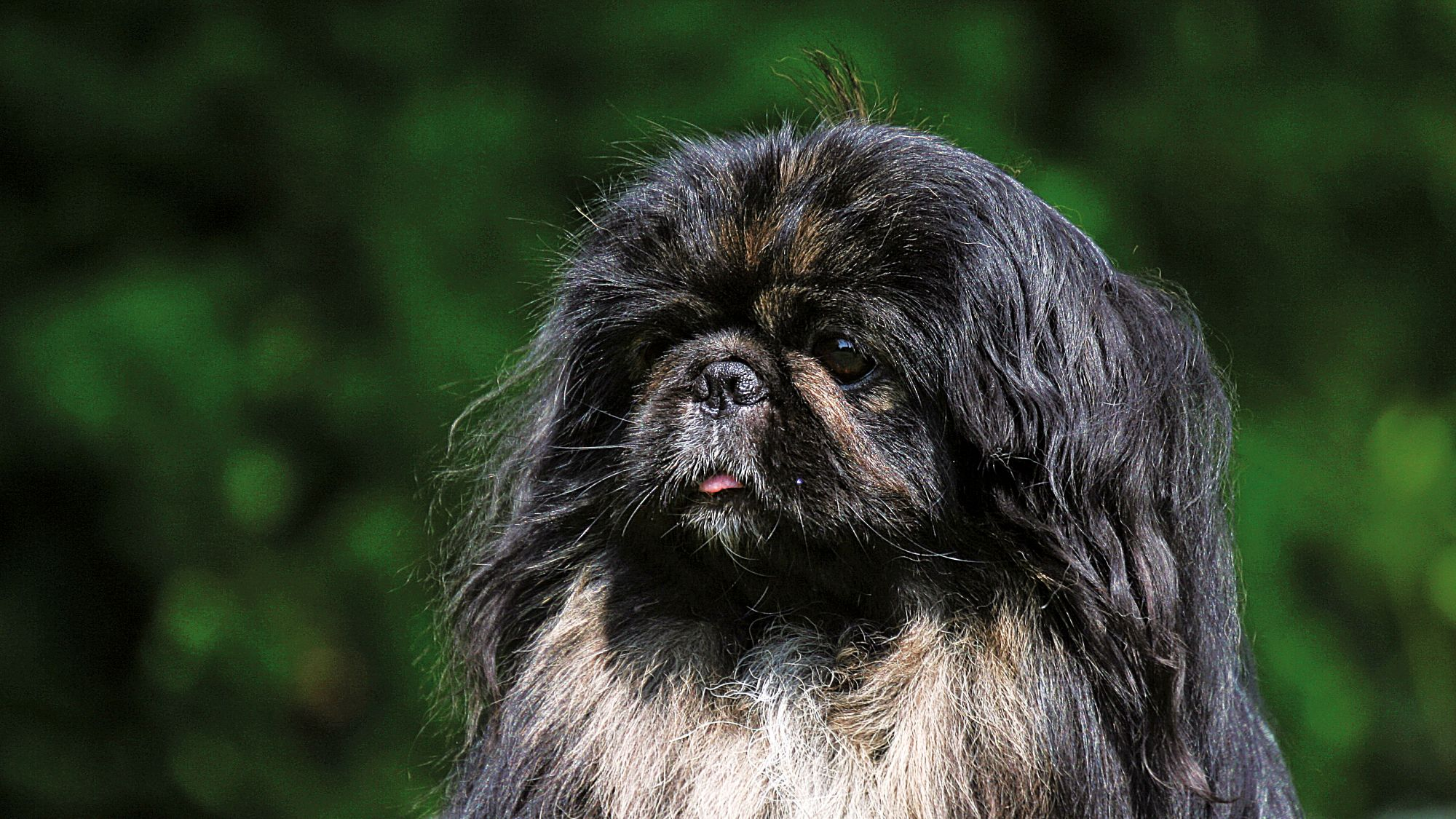
Things to look out for
From specific breed traits to a general health overview, here are some interesting facts about your Pekingese
Check their skin folds
Due to their many skin folds, the Pekingese is susceptible to a minor skin infection caused by friction rubs. One of the easiest ways to prevent this infection from developing is to keep the folds clean and dry with daily brushings. If you notice any sores, red patches, or a foreign odour, head over to your vet. It is perfectly treatable, and ranges from soothing salves to surgical removal - your vet will know the best solution to keep your Pekingese feeling good.
Prefers the shade
The Pekingese does not do well in hot weather, because of their thick double coat. They also struggle with the heat because as a flat-faced breed, they are less able to pant sufficiently compared to other canines. This is one of the reasons they are well suited to indoor life. Air-conditioned apartments will keep your Pekingese content when they’re feeling hot, hot, hot inside during the warmer months. Going on a car journey? Make sure your Pekingese stays cool by keeping the A/C on.
Healthy diet, healthier dog
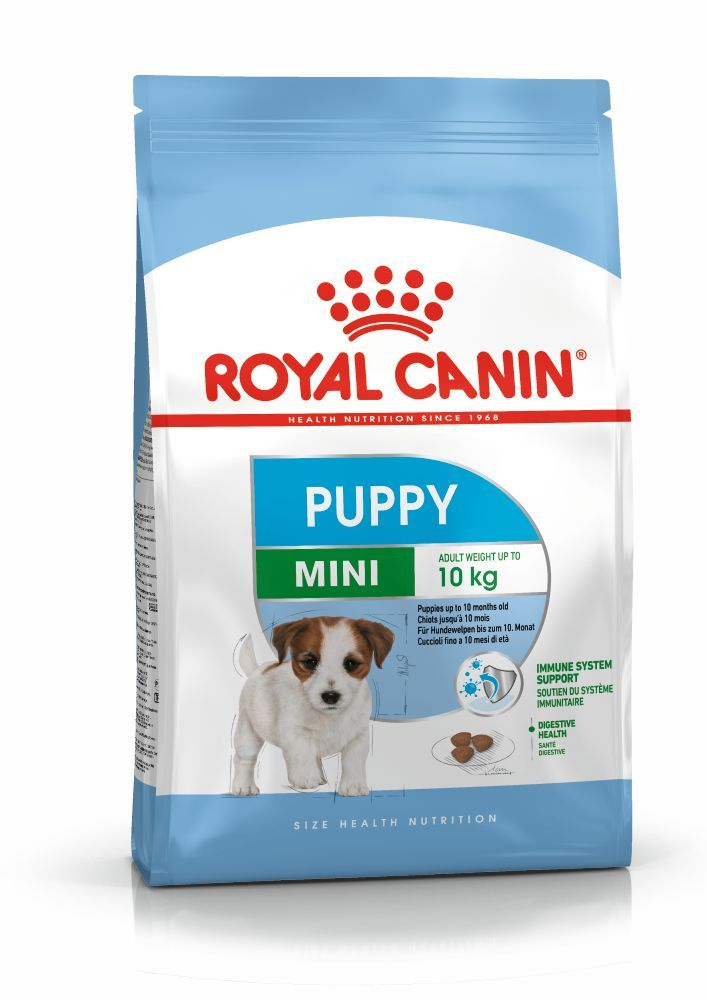
When choosing food for a Pekingese, there are many factors to consider: their age, lifestyle, activity level, physiological condition, and health including potential sickness or sensitivities. Food provides energy to cover a dog’s vital functions, and a complete nutritional formula should contain an adjusted balance of nutrients to avoid any deficiency or excess in their diet, both of which could have adverse effects on the dog.
Clean and fresh water should be available at all times to support good urinary regularity. In hot weather and especially when out exercising, bring water along for your dog’s frequent water breaks.
The following recommendations are for healthy animals. If your dog has health problems, please consult your veterinarian who will prescribe an exclusively veterinary diet.
A Pekingese puppy’s requirements, in terms of energy, protein, minerals and vitamins, are much greater than those of an adult dog. They need energy and nutrients to maintain their body, but also to grow and build it. Until they are 10 months old, a Pekingese puppies’ immune system develops gradually. A complex of antioxidants - including vitamin E - can help support their natural defences during this time of big changes, discoveries, and new encounters. Their digestive functions are different from an adult Pekingese’s, too: their digestive system is not mature yet so it’s important to provide highly digestible proteins that will be effectively used. Prebiotics such as fructo-oligosaccharides, support digestive health by helping balance the intestinal flora, resulting in good stool.
Similarly, a puppy’s teeth – starting with the milk teeth, or first teeth, then the permanent teeth – are an important factor that needs to be taken into account when choosing the size, form, and hardness of kibble. This intense growth phase also means high energy needs, so the food must have a high energy content (expressed in Kcal/100g of food), while concentrations of all other nutrients will also be higher than normal in a specially formulated growth food. It is recommended to split the daily allowance into three meals until they are six months old, then to switch to two meals per day.
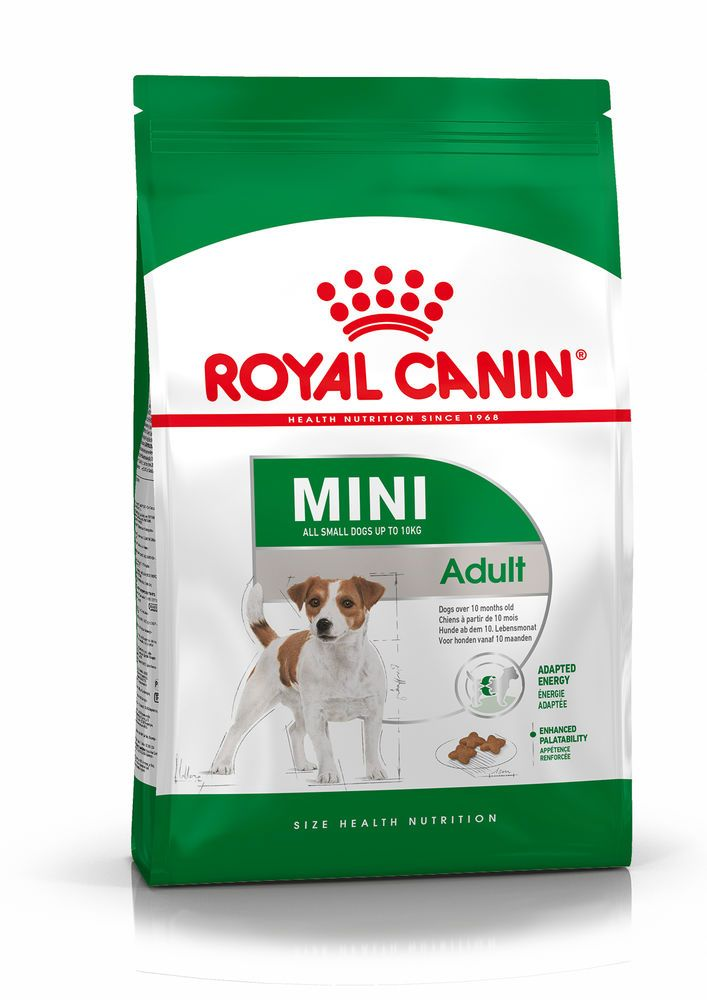
The main nutritional goals for adult Pekingese are:
Maintaining an ideal body weight by using highly digestible ingredients and keeping the fat content at a sensible level
Preserving the health and beauty of the skin and coat with the enriched addition of essential fatty acids (especially EPA-DHA), essential amino acids, and B vitamins.
At adult age, small breed dogs are exposed to oral and dental disorders, more precisely, accumulation of dental plaque and tartar. The Pekingese’s teeth and jaws need a lot of protection. A kibble shape and a texture designed to promote chewing can help in slowing down the formation of dental plaque, and a formula containing calcium chelators can help reduce tartar formation, hence helping to support daily oral hygiene. Small breed dogs are well known for being fussy eaters. Exclusive formula and flavourings, as well as a kibble size with a special texture, will stimulate their appetite. Small breed dogs are prone to urinary stones; a diet that supports a healthy urinary system is recommended.
For Pekingese dogs living mainly indoors, highly digestible proteins, an appropriate fibre content, and very high quality carbohydrate sources will help reduce faecal smell and volume. Because an indoor lifestyle often means less exercise, an adapted calorie content, which meets the reduced energy needs, and a diet that contains L-carnitine, which promotes fat metabolism, can help maintain an ideal weight. It is important to avoid feeding them human foods or fatty snacks. Instead, reward your dog with kibble taken from their daily meal allowance, and strictly follow the feeding guidelines written on the package in order to prevent excessive weight gain.
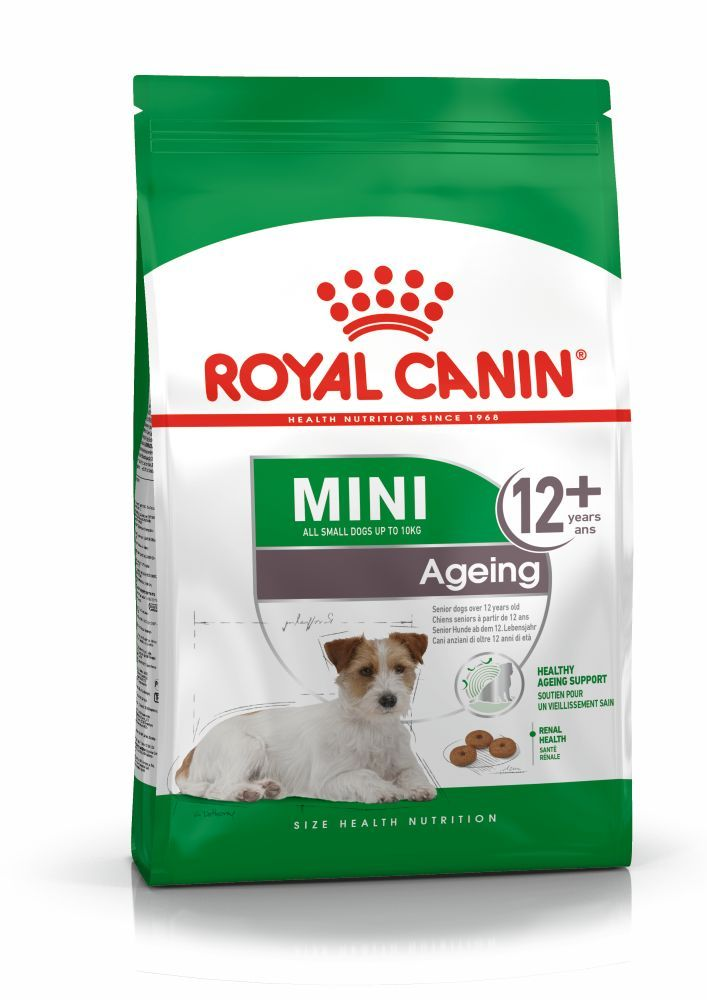
After 8 years old, Pekingese dogs start facing the first signs of ageing. A formula enriched with antioxidants will help maintain their vitality and an adapted phosphorus content will support their renal system. Ageing is also accompanied by the modification of digestive capacities and particular nutritional requirements, so food for older Pekingese dogs should have the following characteristics:
Higher vitamin C and E content. These nutrients have antioxidant properties, helping to protect the body’s cells against the harmful effects of the oxidative stress linked to ageing.
High-quality protein. Contrary to a widely held misconception, lowering the protein content in food brings little benefit in limiting kidney failure. In addition, older dogs are less efficient at using dietary protein than younger dogs. Reducing the phosphorous content is a good way of slowing down the gradual deterioration of kidney function.
A higher proportion of the trace elements iron, zinc, and manganese to help maintain the good condition of the skin and coat.
A higher quantity of polyunsaturated fatty acids to help maintain the quality of the coat. Dogs can normally produce these fatty acids, but ageing can affect this physiological process.
As they age, dogs increasingly suffer from teeth problems. To ensure they continue to eat in sufficient quantities, the shape, size, and hardness of their kibble needs to be tailored to their jaw.
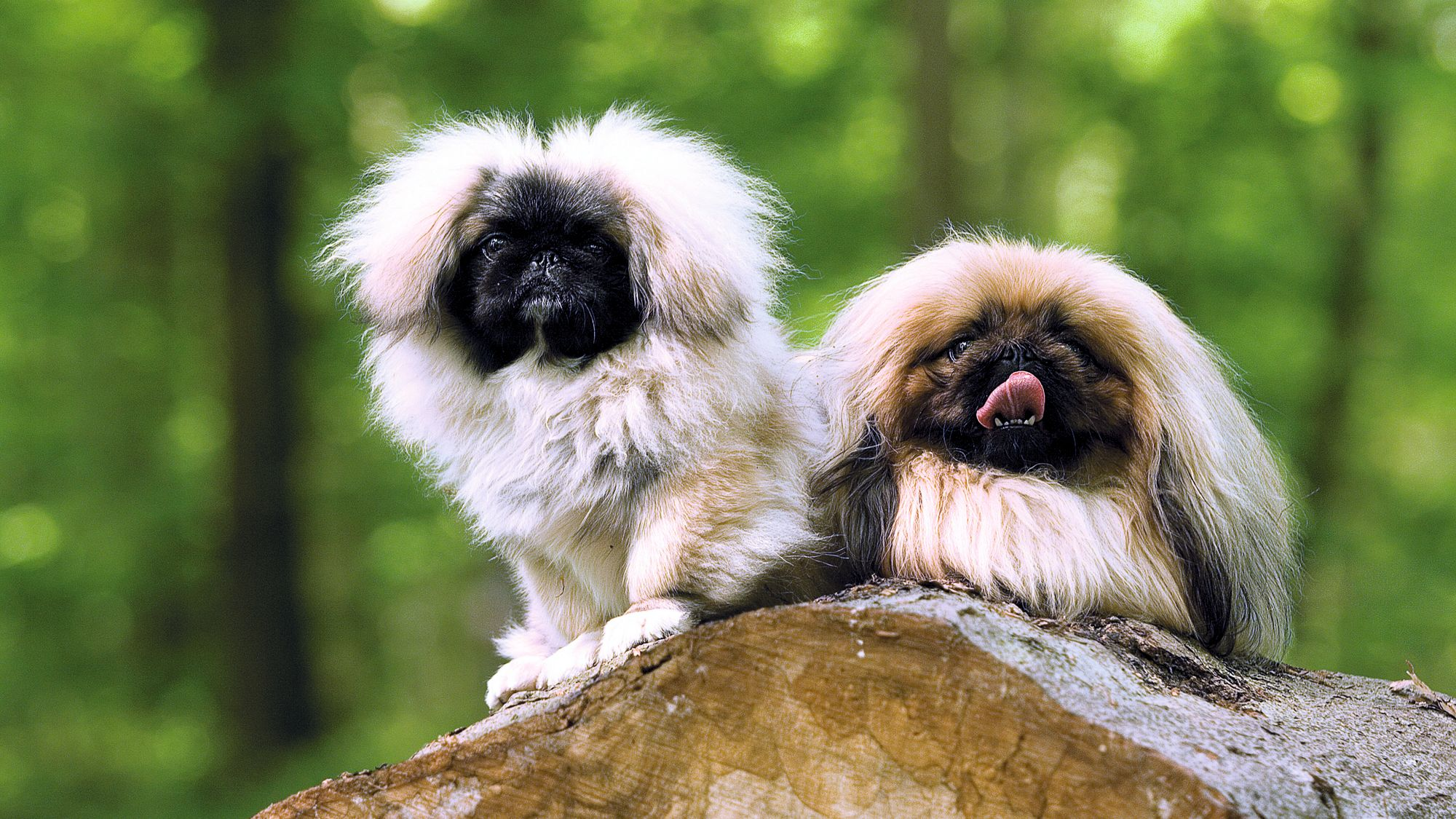
Caring for your Pekingese
Grooming, training and exercise tips
7/7
All about Pekingeses
The Pekingese is one of the more vocal breeds, with a tendency to bark. Sometimes, they bark to warn against intruders. One solution is to develop their social skills as early on as possible, as part of their training. The Pekingese may also bark because they are bored or anxious. Take them for a walk or distract them with a chew toy, to help them to relax and take their mind off the problem at hand.
The average lifespan of a Pekingese dog is 13-15 years, with some living even longer. They are a generally healthy breed, so having a healthy diet, going for their vet check-ups and meeting their activity requirements will help make sure they feel good well into their older years.
Suggested Breeds
Read more on this topic
Sources
- Veterinary Centers of America https://vcahospitals.com/;
- Royal Canin Dog Encyclopaedia. Ed 2010 and 2020
- Banfield Pet Hospital https://www.banfield.com/
- Royal Canin BHN Product Book
- American Kennel Club https://www.akc.org/
Like & share this page